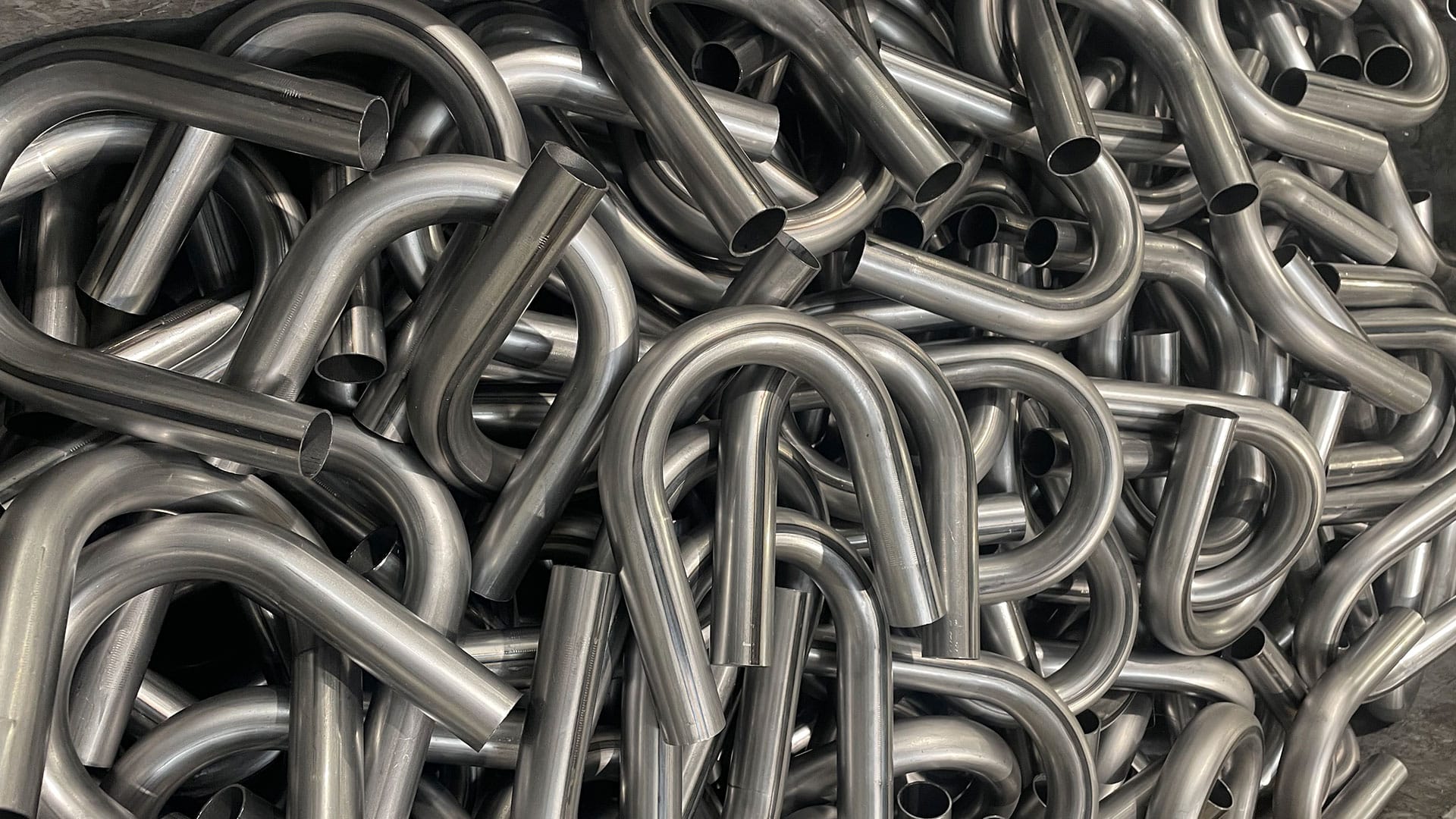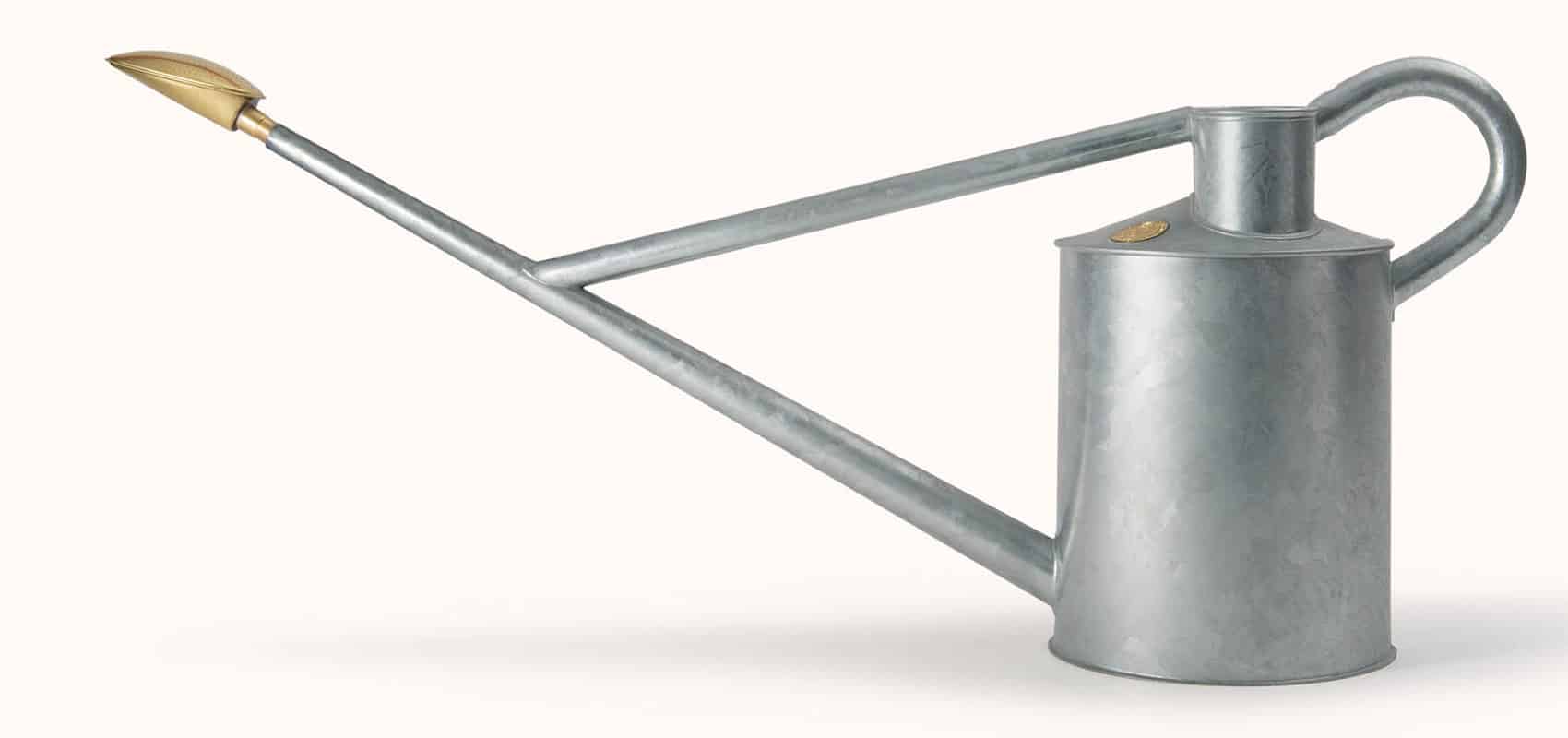Introduction to Tube Bending
Tube bending is a fundamental process in tube manipulation and for the fabrication of related structures and products.
We explore the principles, methods and applications of tube bending, highlighting its importance and versatility in modern manufacturing processes.
What is Tube Bending?
Tube bending is the process of shaping rigid metal tubes into various curves and angles to meet specific design requirements.
There are varied methods of tube bending services, with many capable of being aided by computer numerical controlled (CNC) machinery to enhance repeatability and efficiency. This manufacturing method is crucial in industries such as automotive, aerospace and construction, where precise and customised tube components are essential for optimal performance.
By bending tubes, engineers can create complex geometries such as 90° elbows, 180° U-bends and even 2D and 3D bends. Different types of tube bending techniques offer distinct advantages depending on the desired curvature and material properties.
When manufacturing tubular components, tube bending can preserve the aesthetics of end products and also improve functionality by reducing the need for multiple pieces, welding and potential leak paths. Additionally, utilising bent metal tubes is often more cost-effective and weight-saving compared to other alternatives.

Rotary draw bending using a mandrel:
Rotary Draw Bending
Rotary draw bending involves pulling the tube around a former tool using machine power, resulting in smooth and consistent bends.
Rotary draw bending offers high quality and accuracy in shaping metal tubes for various industrial applications. By utilising CNC technology as well as specialised tooling and machinery, rotary draw bending ensures precise and repeatable bends suitable for a broad range of components.
Mandrel Bending
Mandrel bending is any tube bending process that uses a mandrel to help maintain the shape and integrity of the material being bent.
A mandrel is a tool inserted into the tube to prevent collapsing or deformation during bending, maintaining the tube's internal diameter and improving the quality of the bend. By supporting the tube internally, mandrel bending allows for tighter radii and more consistent bends compared to non-mandrel methods.
Compression Bending
In compression bending, the tube is bent around a former tool using mechanical force.
Compression bending machines can be manual or CNC controlled, offering flexibility in production processes. Compression bending is a widely employed tube bending technique in various industries due to its efficiency and versatility. By utilising compression bending, manufacturers can achieve complex tube configurations with high repeatability and efficiency.
Roll Bending
Roll bending tubes involves passing the tube or pipe between rollers - typically three: two bottom rollers and one top roller.
The bottom rollers are fixed in position while the top roller can be adjusted to apply pressure and bend the tube. As the tube passes through the rollers, the top roller exerts force on the tube, causing it to bend around the bottom rollers. By adjusting the position of the top roller and controlling the speed at which the tube is fed through the machine, different bend radii and angles can be achieved.
Induction bending
Induction bending is a tube bending process that employs heat to bend pipes, tubes and other structural materials.
Straight tubes are placed on a machine bed with a swing arm set to the required radius. The material is then passed through the heated induction coil at a controlled rate, making it easier to bend without causing cracks or deformations. Induction bending is commonly used in industries such as oil and gas, construction and manufacturing to create curved and angled components.
Rigid metal tubes can be fabricated from a variety of different metals. Each provides a different option to meet various structural and functional needs. Choosing the right material is crucial to ensure successful bending processes and the desired performance characteristics in the final product.
Known for its strength and affordability, mild steel tube is often a go-to choice for a huge variety of applications. Its affordability makes it a cost-effective option for projects where a strong and reliable material is needed without breaking the budget. Mild steel tube is also easy to manipulate and for welding contractors, allowing for versatility in design and construction.
With its innate corrosion resistance, stainless steel is ideal for environments requiring high durability. Its ability to maintain its structural integrity even in extreme temperatures further adds to its appeal in various industries. Additionally, stainless steel is easy to clean and maintain, making it a cost-effective choice for long-term use. Its aesthetic appeal, with a sleek and modern look, also makes it a popular choice for architectural and design projects.
Lightweight and malleable, aluminium is preferred for applications and industries where a high strength-to-weight ratio is a top concern. It is commonly used in the aerospace industry for aircraft construction, in the automotive industry for making parts that need to be light yet strong and in the packaging industry for creating lightweight and recyclable containers. The versatility of aluminium makes it a popular choice for manufacturers looking to reduce weight while maintaining durability and performance in their products.
Valued for its durability and resistance to corrosion, copper tube is a popular choice for various industrial applications. Its ability to withstand high temperatures and pressures makes it ideal for use in HVAC systems, refrigeration units and hot water distribution. In the plumbing industry, copper tube is often preferred for its ease of installation, malleability and long-term performance. Additionally, copper tubes are easily recycled, further adding to its appeal as a sustainable material choice.
Like many other manufacturing processes, tooling plays a crucial role in achieving accurate and consistent bends. Understanding the functions and proper usage of these tools is essential for successful tube bending operations.
Die Sets
Die sets in tube bending serve as crucial components for shaping tubes into desired configurations with precision and accuracy. These tools consist of multiple components, including the bend die and clamp die, which work together to form the tube. The bend die shapes the tube around a specific radius, while the clamp die secures the tube in place during the bending process. Proper selection and maintenance of die sets are essential for achieving accurate and high-quality bends.
Mandrels
A mandrel is a solid rod or shaft that is inserted into the tube during the bending process to prevent it from collapsing or wrinkling. Mandrels play a critical role in tube bending processes by providing internal support and maintaining the shape of the tube during bending. They come in various types, such as plug, form and ball mandrels. Mandrels ensure consistent bending results, reduce deformation and help achieve accurate bend radii.
Wiper Dies
An integral component in tube bending processes, wiper dies play a crucial role in ensuring the smooth and precise shaping of tubes by removing wrinkles and maintaining consistent wall thickness. By exerting pressure on the tube during bending, wiper dies help eliminate imperfections and ensure the final product meets required specifications. These tools are essential for achieving high-quality bends in various materials and applications.
Thin-Walled Tubes
When dealing with thin-walled tubes in tube bending processes, manufacturers face unique considerations due to the material's reduced thickness. Thin-walled tubes are more prone to deformation, wrinkling and collapse during bending due to their lower resistance to external forces.
Special care must be taken to prevent these issues, such as using mandrels to support the tube internally and selecting appropriate bending techniques like rotary draw bending for better control. Additionally, the choice of material is crucial, with softer metals like aluminium requiring even more delicate handling.
Complex Geometries
Tackling complex geometries in tube manipulation presents a formidable task requiring precision and expertise. Creating bends beyond simple 90° elbows or U-bends involves intricate 2D and 3D shapes and compound bends with changes in direction.
These complex geometries pose challenges such as maintaining uniform wall thickness and avoiding deformities. Engineers must carefully plan and execute the bending process to ensure the final product meets design specifications while overcoming the inherent difficulties associated with intricate tube geometries.
Material Springback
Material springback occurs when a tube, after being bent, tries to return to its original shape due to the release of internal stresses. This can lead to deviations from the intended bend angle and radius, impacting the final product's dimensions and quality.
Engineers can combat springback by over-bending the tube slightly, compensating for the anticipated rebound. Factors such as material properties, bend radius and bending method influence the degree of springback. Employing precise calculations and techniques can help minimise springback and achieve the desired bend geometry in tube bending processes.
The versatility and efficiency of tube bending make it a valuable asset across various manufacturing sectors, contributing to the production of high-quality components.
Automotive Sector:
Tube bending is a crucial process in automotive manufacturing that allows for the creation of components such as exhaust systems, chassis components and automotive seating structures. Tube bending techniques can enhance the overall integrity of a vehicle while reducing weights and improving safety.
Aerospace Sector:
In the aerospace sector, tube bending is employed to produce intricate fuel lines, hydraulic systems and airframe structures, ensuring precision and reliability in demanding environments.
Furniture:
In the furniture industry, tube bending enables the creation of elegant and ergonomic designs for chairs, tables and other furnishings. With tubular metal furniture, manufacturers can achieve cost-effective solutions, reduce assembly time and enhance the overall aesthetics of their products.
HVAC:
Tube bending is an essential process in the HVAC industry that allows for the creation of custom ductwork and piping systems that are efficient, space-saving and tailored to the specific needs of a building's heating, ventilation and air conditioning system.
Consumer Goods:
In the consumer goods sector, tube bending plays a crucial role in the production of various products including fitness equipment, bicycles and gardening tools such as watering can handles. With tube bending, manufacturers are able to create durable, lightweight and aesthetically pleasing consumer goods.
Tube bending is a critical process in the manufacturing industry, allowing for the precise shaping of metal tubes for various applications. By understanding the different techniques, materials, tools and challenges associated with tube bending, designers and manufacturers can optimise their production processes and create high-quality products. With its wide range of applications, tube bending plays a vital role in enhancing the efficiency and effectiveness of manufacturing operations.

Get in touch today...
either contact us on the details below or fill out the form and we'll get back to you!